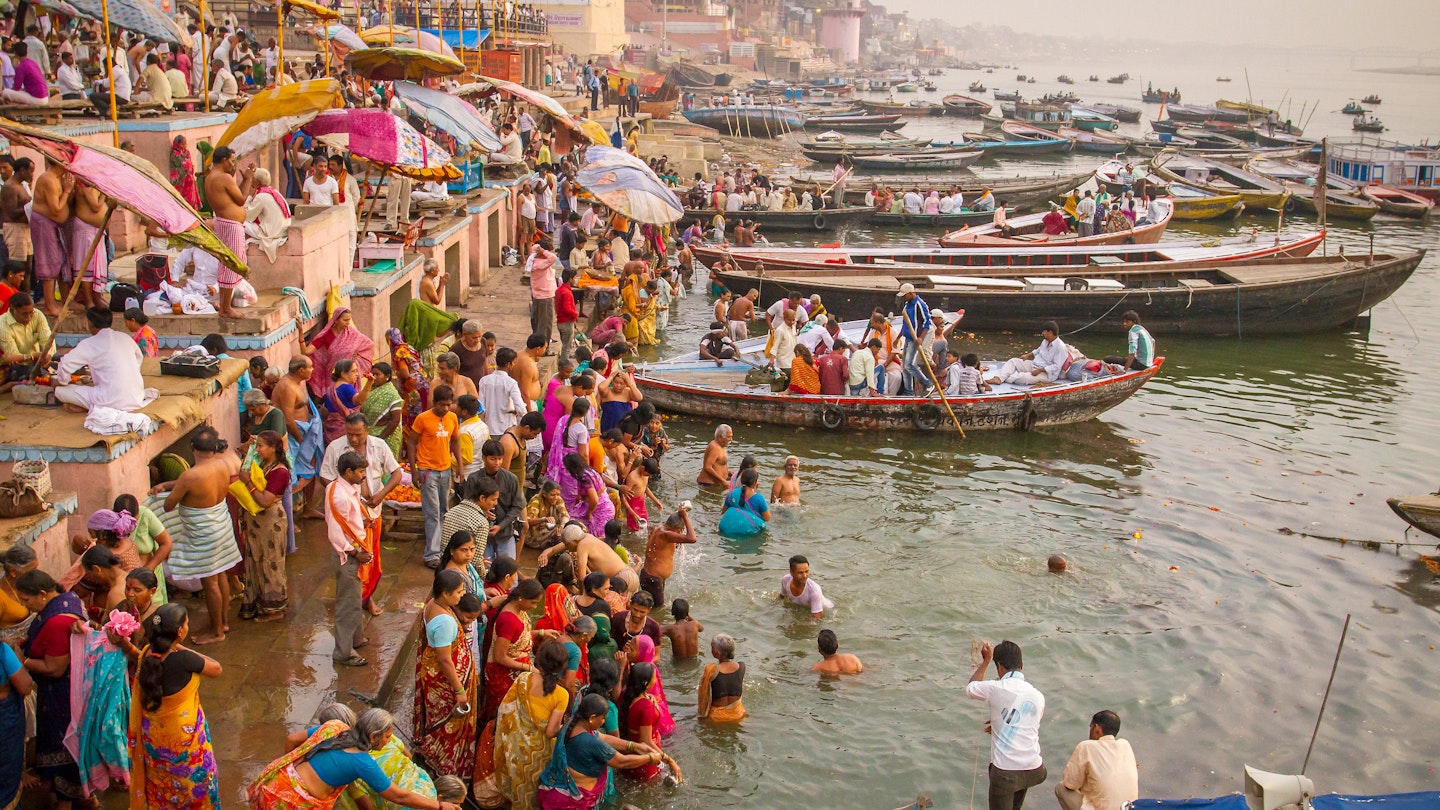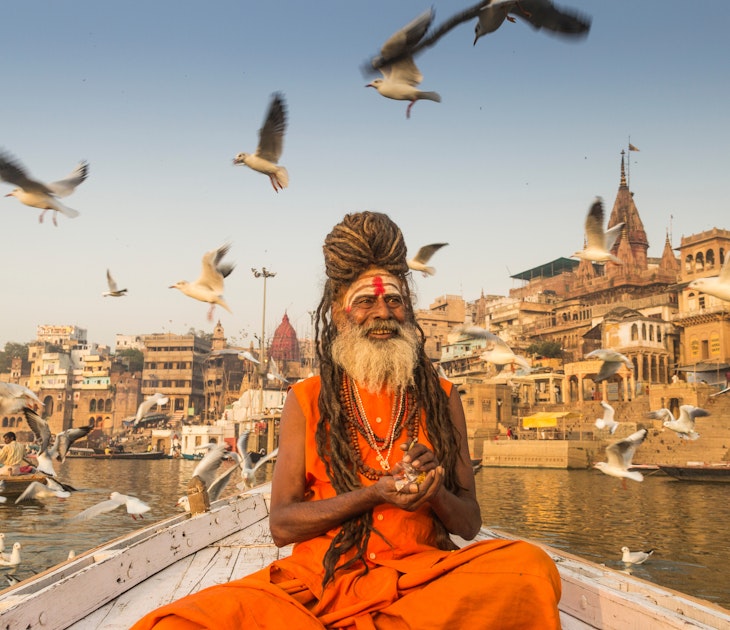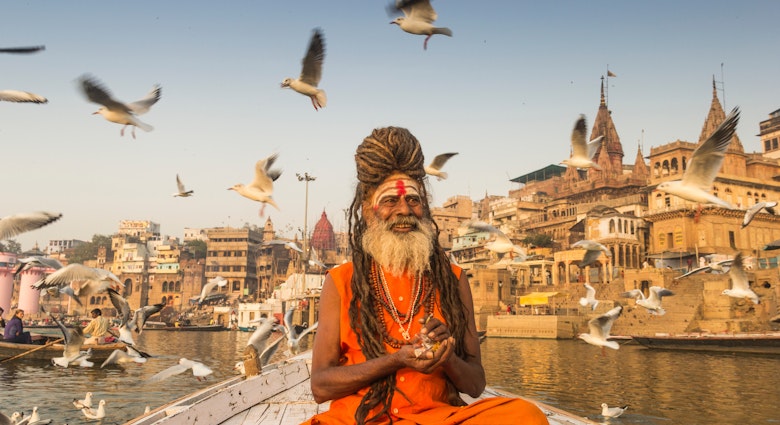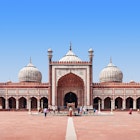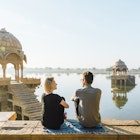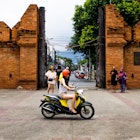So you’ve visited the Golden Triangle of Delhi, Agra and Jaipur and survived the crowds? You've earned your India stripes and now you're ready to take on the rest of the subcontinent. So where to begin? Our pick: Varanasi, aka Benaras, the nation's most sacred city, and the perfect place to connect with India's spiritual side.
Sprawling along the banks of the holy River Ganges, Varanasi is often described as India’s spiritual capital – a place so sacred that to die here is said to be a fast track to moksha, liberation from the endless cycle of rebirth and union with the divine. Despite the crowds of visitors who descend on the city, both foreign and domestic, there's enough magic and intrigue here to delight even the most well-trodden traveller. Even if you don't come away converted, you'll leave with a sense of having, just for a moment, glimpsed India's soul.
What to expect
As the oldest city in India, and one of the oldest continuously inhabited cities on earth, Varanasi is frenetic and intense, colourful and chaotic. It's also an immensely exhilarating and captivating place to visit once you get past the initial culture shock. In times past, the city was known as Kashi and later Benaras, before residents settled on Varanasi, a reference to the Varuna and Assi, two tributaries of the Ganges that come together in the heart of the holy city.
For Hindus, the focus of attention is the string of ‘ghats’, giant ceremonial steps leading down to the sacred river, where Hindu pilgrims come to cleanse their souls of sin through ritual bathing. From early morning till long after dark, the riverbanks are mobbed by devotees, mendicant sadhus (holy men), fortune-tellers, yoga practitioners, beggars, boat operators, trinket vendors, snack-sellers, silk-shop touts and of course visiting travellers. Yet despite the crowds, an air of devotion still pervades. Many Hindu pilgrims even make their final journey on the banks of the Ganges, passing to the next life in the funeral fires that burn ceaselessly along Manikarnika Ghat.

To appreciate the ghats in all their rainbow glory, come at dawn, and hire a boat to explore the riverbanks before the heat and crowds become too oppressive, then return late in the afternoon, when the warm evening light makes for richly saturated photographs, and devotees gather at Dashashwamedh Ghat for the atmospheric evening aarti (fire ceremony) prayers.
Arrival and orientation
Varanasi’s old city stretches back from the west bank of the Ganges in a maze of pedestrian alleys, or galis. This tight tangle of lanes can feel claustrophobic and crowded, but this is by far the most atmospheric part of the city. Indeed, things have changed here only superficially since medieval times. The old city spills out onto the west bank of the Ganges, and the riverbank is lined with more than 80 ceremonial ghats, with central Dashashwamedh Ghat being the busiest and most famous. The east bank of the Ganges is a barren sandbank that floats in a misty haze created by the smoke from the endless cremation fires at Manikarnika.
For orientation purposes, the most useful navigation feature in the Old City is the junction known as Godaulia Crossing, a short walk from Dashashwamedh Ghat. The main railway station, Varanasi Junction, also known as Varanasi Cantonment, is a few kilometres north, and the main bus stand is opposite the station. Taxis and cycle and auto-rickshaws abound, but motor vehicles are banned from parts of the old city from 9am to 9pm. The airport is 24km north of the city, easily reached by autorickshaw or taxi.

What to do in Varanasi
You won't be kicking your heels in Varanasi. From temple trips to yoga classes and prayer ceremonies on the riverbank, there's always something interesting to fill your time. You'll want to set aside at least a half day for sitting on the stone steps overlooking the Ganges, soaking up the remarkable atmosphere of faith and devotion. Here are some more top recommendations for exploring the sacred city.
- Walk the ghats: The ghats that line the Ganges are most atmospheric at dawn, when pilgrims flock to the riverbank for puja (prayers), offering water from the sacred river to the rising sun. It's possible to walk most of the way along the west bank, with occasional forays inland to get around obstacles such as ancient stone plinths and collapsing temples. Start from Assi Ghat, and amble north, via Dashashwamedh and Manikarnika to Schindia Ghat, where an ancient stone Shiva temple is slowly slipping into the mire, and Panchganga Ghat, crowned by a stone mosque built by the Mughal emperor Aurangzeb. Bring plenty of camera memory cards, but show due respect to devotees and avoid taking photos of funerals. Actually bathing in the Ganges is not recommended – this stretch of river is one of the most polluted waterways on earth.
- Take to the water: A dawn boat ride on the Ganges will give you an unparalleled view of the ghats and temples from a more peaceful vantage point than observing from dry land. Watch the morning bathing rituals, and witness cremations taking place at Manikarnika Ghat, or consider an evening ride for uninterrupted views of the aarti ceremony at Dashashwamedh. Stroll along the embankment anywhere in Varanasi and a boatman will be sure to find you, but most hotels also arrange boat trips.
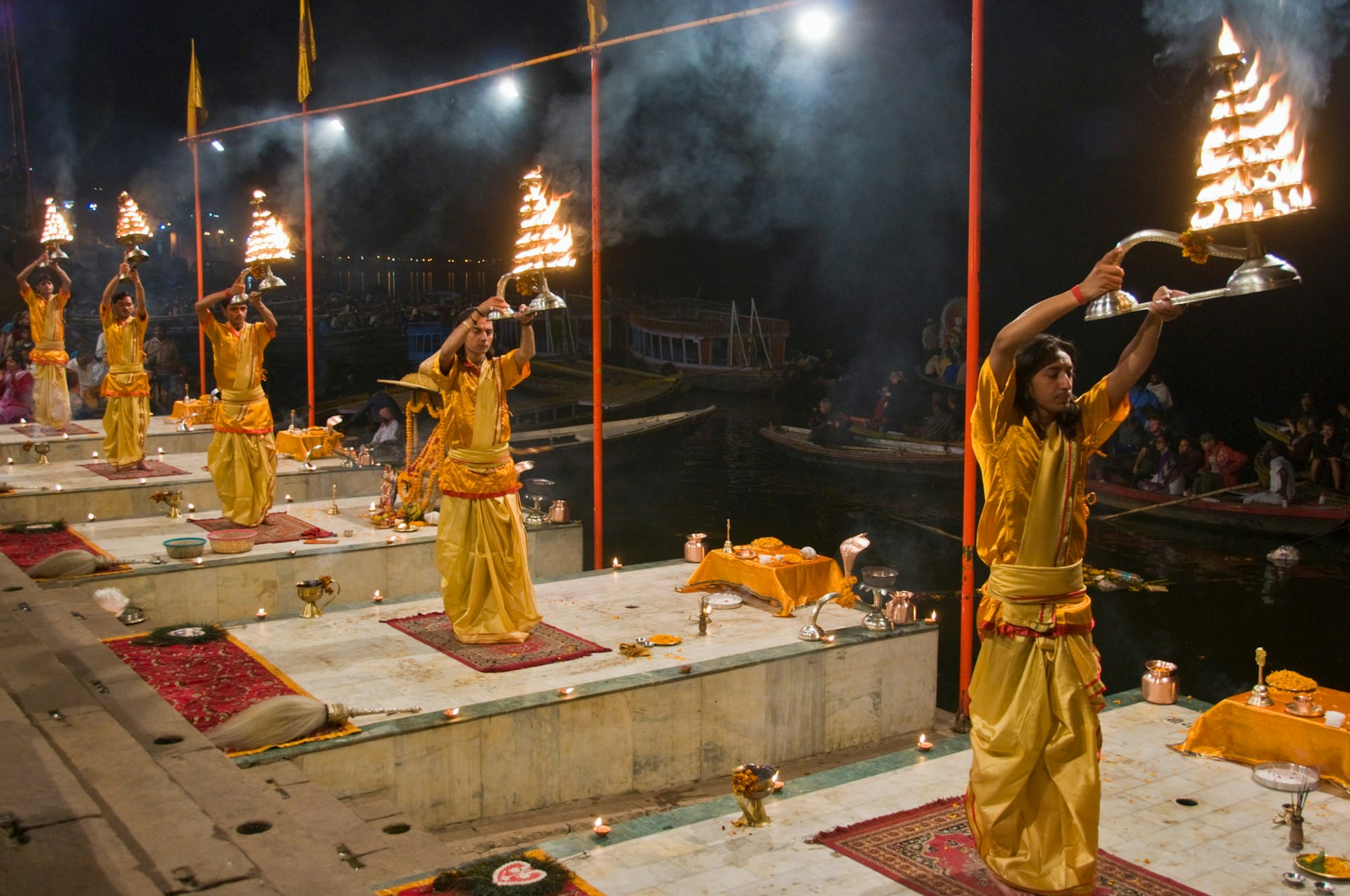
- Traipse around temples: Okay, maybe not all of them – there are hundreds – but be sure to visit the gilded Vishwanath Temple, sacred to Shiva in his role as lord of the universe. With its gold-plated spires, Vishwanath is one of India's most revered temples, but following past attacks by militants, security is tight, and visitors have to go through vigorous security procedures to enter (bring your passport). Other temples are littered through the streets of the old city; note the tiny shrines venerating orange boulders, worshiped as representations of the monkey god Hanuman.
- Get lost in the galis: Varanasi's twisting, turning alleys can be disorientating, but getting lost is all part of the experience, and you only need to find the nearest ghat to get your bearings. The alleys are lined with shops, food stalls, tucked-away shrines, candlelit deities in alcoves and homes painted in vivid colours, plus the odd sacred cow feasting on scraps left outside houses. Prepare yourself for the galis' pungent smell of cow dung, incense and waste – it certainly awakens the senses.

- Escape to Sarnath: Varanasi has been a Buddhist city for almost as long as it has been a Hindu city. Take a rickshaw 6km north through Varanasi’s busy streets to an island of calm at sacred Sarnath, where the Buddha preached his first sermon after achieving enlightenment. This was once the centre of a huge monastic community, and today, the ruins of 2000-year-old religious buildings sprawl across a peaceful park, rising up to the 34m-high Dhamekh Stupa.
- Plug into Indian culture: As one of India's most important centres of learning, Varanasi is a great place to learn about Indian culture. Take a visit to the learned precincts of the Benares Hindu University, join a yoga class on the riverbank, or enroll on a course in Carnatic classical music at the International Music Centre Ashram (this is, remember, the home town of sitar-maestro Ravi Shankar).
- Prayer time: Every evening a mesmerising aarti ceremony takes place at Dashashwamedh Ghat and the air is filled with prayers, chanting, music and incense. Cymbals crash, bells ring, drums bang, oil lamps are thrust skywards and floating lights are cast into the Ganges. A festival-style atmosphere pervades and the ghat is mobbed by pilgrims and sightseers; a boat on the Ganges is often a better vantage point.

Where to stay
The tangled warren of the Old City is the most interesting place to stay, with numerous budget guesthouses, some with terraces overlooking the Ganges. Ganpati Guest House is a veteran hangout; the best rooms have balconies overlooking the river and there's a shady, calm courtyard. Cheap rooms with the added bonus of an excellent restaurant on site are available at Brown Bread Bakery Guesthouse near Pandey Ghat; they also run reliable boat trips. Moving well upmarket, Brijrama Palace is a genuine palace, built in 1812 by the royal family of Nagpur and full of period chandeliers and oriental rugs; rooms are lavish and the restaurant is one of Varanasi's best.
There are more inviting places to stay around Assi Ghat, slightly south of the main hubbub. Stops Hostel was Varanasi's original hostel, and it offers just the right traveller vibe, with loads of communal space and six- to 14-bed dorms. Hotel Ganges View ups the ante, with gorgeous rooms and a garden terrace, set in a colonial-style home overlooking the river. There are numerous budget and mid-range hotels near the station; standards range from comfortable to dreadful, and noise is the price to pay for being so close to transport links. The Cantonment, north of Varanasi Junction, is another option, with several big name chain hotels.
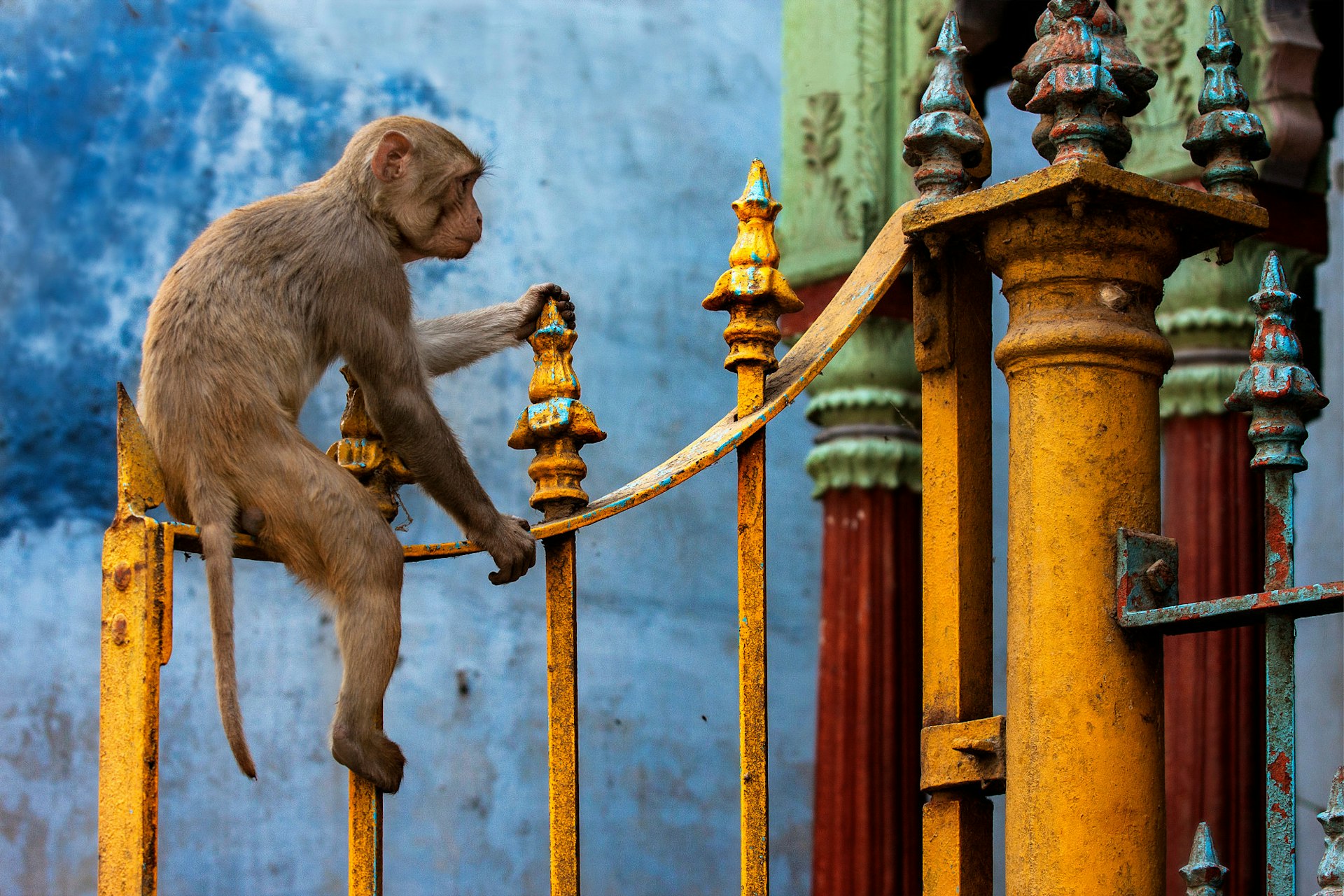
Scams and tips
Alas, the warnings you may have heard are true. Varanasi is scam central, but the good news is it's easy to avoid most of the tricks and cons with a bit of common sense. Here's a quick guide to the most common pitfalls for travellers in the sacred city.
- Rickshaw-wallah scams: Your driver may insist that your hotel has burned down or the road is closed, but they know another hotel just as good (which, conveniently, will also pay them a generous commission). Refuse to pay for your ride unless they take you to your chosen destination – and check you really are at your destination before getting out.
- Boatmen: The cost of boat hire is routinely elevated so bargain hard, and before you board be sure you know how much you’ll be paying and how long the ride will last – boatmen have been known to stop halfway along the river saying you’ve only paid for 30 minutes and need to pay more to continue.
- Cremation ghats: If you visit the cremation grounds at Manikarnika Ghat you may be approached by men claiming they are collecting charitable donations to pay for cremations for the poor – this is a scam so politely decline. Also be wary of 'guides' offering to lead you to special viewpoints in exchange for money. Note that taking photographs of cremation fires is frowned upon; watch respectfully instead and contemplate the nature of mortality.
- Touts and commission agents: Numerous counterfeit guides, touts and commission agents stalk areas visited by tourists, hoping to steer visitors to commission-paying silk shops and hotels. Ignore their advances, and make your own way to where you want to go, or you'll invariably pay more than the going rate.
- Bhang lassis: Varanasi is one of India's most important Shaivite centres, and bhang (marijuana) is widely available. The authorities take a dim view of foreign tourists buying drugs (and the penalties can be severe) but many guesthouses can discretely provide a bhang lassi (a marijuana-spiked yoghurt drink). Note that these can be very potent, and travellers have been robbed or worse while under the influence.
- Annoying apes: Monkeys have free run of the Old City, and they can be aggressive, particularly if you are carrying food. Monkeys can also carry rabies so give them a wide berth and always close the doors and windows to your room if you leave, even if it's just to go to reception.
- General hassle: In the Old City, you’ll constantly be approached by people offering massages, boat rides, fortune telling and dubious 'ear cleaning' services. Although harmless, this hustle can become annoying. If you are not interested, say no firmly but politely and continue walking. Staying calm is the only way to cope – just accept this is the culture and embrace the chaos that is Varanasi!
Last updated in January 2018
